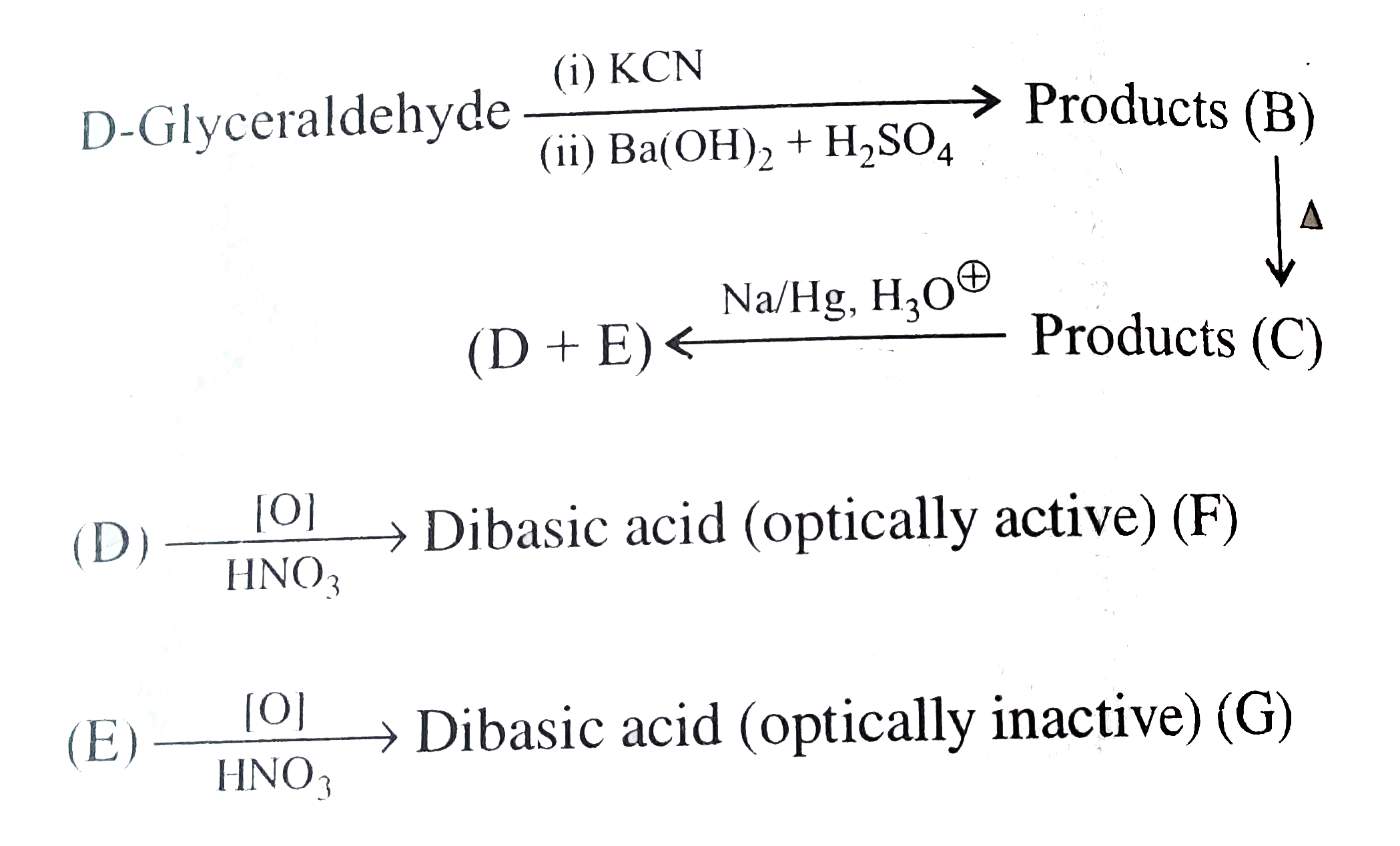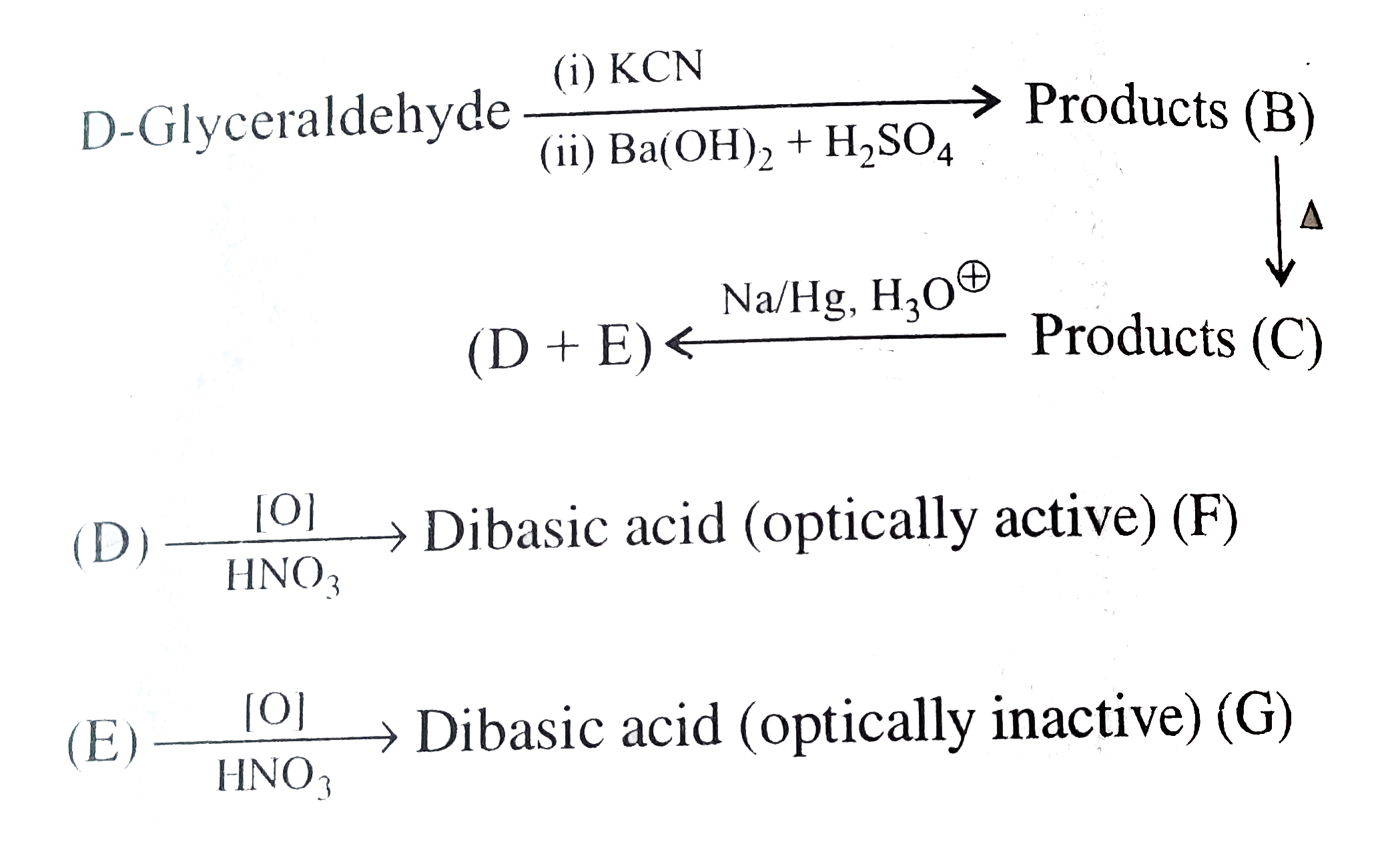When boromobenze is monochlorinated. Two isomeric compounds (A) and (B) are obtained. Monobromination of (A) gives several isomeric products of molecular formula C6H3ClBr2. While mononbromination of (B) yields only two isomers (C) and (D). Compound (C) is identiacla to one of the compounds obtained from the bromination of (A). However, (D) is totally different form any of the isomeric compounds obtained from the bromination of (A). Give the sturctures of (A),(B),(C) and (D), and also the structers of the four isomeric mononbrominated products of (A). Support your answer wtih resoning.
To solve the problem, we need to identify the structures of the compounds (A), (B), (C), and (D), as well as the four isomeric monobrominated products of (A). Let's break this down step by step.
Step 1: Identify Compounds (A) and (B)
When bromobenzene is monochlorinated, we can have two isomeric products due to the positions where chlorine can be added relative to the bromine substituent. The two isomers are:
- (A): 2-Bromochlorobenzene (ortho position)
- (B): 4-Bromochlorobenzene (para position)
Step 2: Monobromination of Compound (A)
Now, we need to perform monobromination on compound (A). The structure of (A) is 2-Bromochlorobenzene. The bromine and chlorine substituents are at the ortho positions. The possible positions for the new bromine atom are:
1. At the ortho position relative to the existing bromine (which would lead to a steric hindrance).
2. At the para position relative to the existing bromine.
3. At the meta position relative to the existing bromine.
Thus, the four isomeric products obtained from the monobromination of (A) are:
1. 1,2-Dibromochlorobenzene (ortho)
2. 1,3-Dibromochlorobenzene (meta)
3. 1,4-Dibromochlorobenzene (para)
4. 1,2,4-Tribromobenzene (where both bromine atoms are at ortho and para positions)
Step 3: Monobromination of Compound (B)
Next, we perform monobromination on compound (B), which is 4-Bromochlorobenzene. The possible positions for the new bromine atom are:
1. At the ortho position (which is adjacent to the chlorine).
2. At the para position (which is adjacent to the existing bromine).
Thus, the two isomers obtained from the monobromination of (B) are:
1. 1,4-Dibromochlorobenzene (same as one of the products from (A))
2. 1,2-Dibromochlorobenzene (which is different from any product obtained from (A))
Step 4: Identify Compounds (C) and (D)
From the above analysis:
- (C): 1,4-Dibromochlorobenzene (identical to one of the products from (A))
- (D): 1,2-Dibromochlorobenzene (totally different from any of the products from (A))
Summary of Structures
- (A): 2-Bromochlorobenzene
- (B): 4-Bromochlorobenzene
- (C): 1,4-Dibromochlorobenzene
- (D): 1,2-Dibromochlorobenzene
Four Isomeric Monobrominated Products of (A):
1. 1,2-Dibromochlorobenzene (ortho)
2. 1,3-Dibromochlorobenzene (meta)
3. 1,4-Dibromochlorobenzene (para)
4. 1,2,4-Tribromobenzene
When bromobenzene is monochlorinated, we can have two isomeric products due to the positions where chlorine can be added relative to the bromine substituent. The two isomers are:
- (A): 2-Bromochlorobenzene (ortho position)
- (B): 4-Bromochlorobenzene (para position)
Now, we need to perform monobromination on compound (A). The structure of (A) is 2-Bromochlorobenzene. The bromine and chlorine substituents are at the ortho positions. The possible positions for the new bromine atom are:
1. At the ortho position relative to the existing bromine (which would lead to a steric hindrance).
2. At the para position relative to the existing bromine.
3. At the meta position relative to the existing bromine.
1. 1,2-Dibromochlorobenzene (ortho)
2. 1,3-Dibromochlorobenzene (meta)
3. 1,4-Dibromochlorobenzene (para)
4. 1,2,4-Tribromobenzene (where both bromine atoms are at ortho and para positions)
Next, we perform monobromination on compound (B), which is 4-Bromochlorobenzene. The possible positions for the new bromine atom are:
1. At the ortho position (which is adjacent to the chlorine).
2. At the para position (which is adjacent to the existing bromine).
1. 1,4-Dibromochlorobenzene (same as one of the products from (A))
2. 1,2-Dibromochlorobenzene (which is different from any product obtained from (A))
From the above analysis:
- (C): 1,4-Dibromochlorobenzene (identical to one of the products from (A))
- (D): 1,2-Dibromochlorobenzene (totally different from any of the products from (A))
- (A): 2-Bromochlorobenzene
- (B): 4-Bromochlorobenzene
- (C): 1,4-Dibromochlorobenzene
- (D): 1,2-Dibromochlorobenzene
1. 1,2-Dibromochlorobenzene (ortho)
2. 1,3-Dibromochlorobenzene (meta)
3. 1,4-Dibromochlorobenzene (para)
4. 1,2,4-Tribromobenzene
Topper's Solved these Questions
- AROMATIC COMPOUNDS AND ALKYL AND ARYL HALIDES BOOK - CENGAGE CHEMISTRY ENGLISHCHAPTER - AROMATIC COMPOUNDS AND ALKYL AND ARYL HALIDES EXERCISE - Exercises Concept Application Type
2 Videos
- AROMATIC COMPOUNDS AND ALKYL AND ARYL HALIDES BOOK - CENGAGE CHEMISTRY ENGLISHCHAPTER - AROMATIC COMPOUNDS AND ALKYL AND ARYL HALIDES EXERCISE - Exercises Concept Application
4 Videos
- AROMATIC COMPOUNDS AND ALKYL AND ARYL HALIDES BOOK - CENGAGE CHEMISTRY ENGLISHCHAPTER - AROMATIC COMPOUNDS AND ALKYL AND ARYL HALIDES EXERCISE - Exercises Subjective Type
5 Videos
- APPENDIX INORGANIC VOLUME 2BOOK - CENGAGE CHEMISTRY ENGLISHCHAPTER - APPENDIX INORGANIC VOLUME 2EXERCISE - Short Answer Type
179 Videos
- BIOMOLECULESBOOK - CENGAGE CHEMISTRY ENGLISHCHAPTER - BIOMOLECULESEXERCISE - Exercises Archives (Analytical And Descriptive)
8 Videos
Similar Questions

Two isomeric products are obtained in (B). They are:
View Solution
Two isomeric products are obtained in (C) they are:
View SolutionA compound (A) with molecular formula C5H10 gives one monochlorination product. Compound (A) is:
View SolutionTwo isomeric compounds A and B have some molecualr formula C3H5N. It was found that
View SolutionTotal number of isomeric alkene possible with compound having molecular formula C4H8 is
View SolutionName the type of isomerism that the compound with molecular formula C3H6O2 exhibits. Represent the isomers.
View SolutionHow many acyclic structural isomeric carbonyl compound having molecular formula C6H12O can gives haloform test.
View SolutionReduction of hexose A (molecular formula C6H12O6) with sodium borohydride gives compound B and C. Compound B is optically inactive, whereas compound C is optically active. Which of the following is compound A?
View SolutionFour isomeric para-disubstituted aromatic compounds A to D with molecular formula C8H8O2 were given for identification. Based on the following observations, give structures of the compounds.
View SolutionAn organic compound with molecular formula C6H12 upon ozonolysis gives only acetone as the product. The compound is :
View Solution
